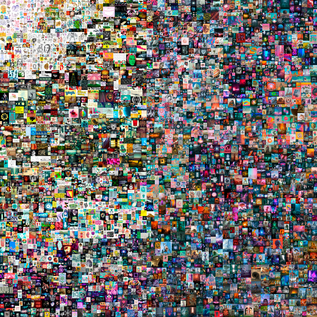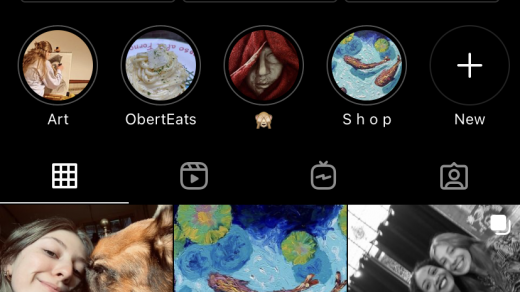Every day, every hour, every minute people spend loads and loads of money on stuff. They spend it on things they use, things the don’t use, things they use only one time etc. Each and every one of us has most likely already bought something they thought they’d really need, but ended up forgetting about it; and now the item is stowed in a dark corner somewhere in the house. For sure, things like food, drinks, phones and cars, to name a few, are definitely worthwhile and absolutely useful, but beside some essentials, what is really worth your money?
What’s worth spending money on? New clothes because your old ones became too small? – Agreed! A digital artwork for over $69 million, that anybody could just copy paste? – Say what???
Exactly this is what happened though this year in march. The programmer and owner of Metapurse, Vignesh Sundaresan aka MetaKovan, bought the digital artwork Everydays: The First 5000 Days by Beeple (Mike Winkelmann). The programmer and owner of Metapurse Vignesh Sundaresan bought the digital artwork Everydays: The First 5000 Days by the artist Beeple (Mike Winkelmann). Sundaresan paid $69,3 million for the linked NFT, using the cryptocurrency Ether, which makes it the most expensive NFT and one of the most expensive artworks by an artist, who is still alive.
Everydays: The First 5000 Days

use of low-resolution for copyright reasons
NFT, what?
Okay, but what exactly is an NFT? NFT stands for non-fungible token, which is unique code that certifies that you are the owner of something and is, unlike cryptocurrency, not interchangeable. Expressed in a simple way, a NFT is a ’proof of ownership’-code. They can represent digital files such as videos, photos, audios or in this case a digital artwork. The sectors in which NFTs are prominently used in are digital art, games, music but also film, sports and many more.
Why pay so much?
But again, why would one person ever spend so much money on a NFT, which you could technically just copy past (just like I did in this post)?
Well, as I explained before, a NFT is non-fungible, which means not interchangeable, unique, one of a kind. There is only one person who has access to/ owns the code to the original artwork of Beeple. That is, you could take a picture of a Picasso, a Rembrandt or Da Vinci’s Mona Lisa, so why buy them for millions of euros? As simple as it is: there will still be only one original. Yes, you will have a photocopy of the artwork but it is yet a copy and not the original. The same applies to the NFT Everydays: The First 5000 Days. We can make screenshots of the artwork, copy paste it, print it out, but in the end the owner of the NFT owns the original token.
What about the future?
NFTs are viewed by many people as the future of digital art. They seem to open a lot of doors in the digital (art) world, but there is always two sides of the same coin. While they had their big breakthrough in many sectors of our world, people tend to forget or don’t even know about the effect NFTs have on the environment. The digital place where the NFT Everydays: The First 5000 Days is stored, is “responsible for the annual emission of more carbon into the atmosphere than most small countries.” They damage the environment to an extent that we cannot possibly think of. The mining of cryptocurrencies also contribute to this, for it takes an unimaginable amount of energy and electricity to mine only one bitcoin for example. This leaves us to think about, do we really need this kind of art? Why not create art in the traditional style or at least how can we make digital art and NFTs more sustainable?
Sources and additional information
https://www.mei.edu/publications/nfts-and-future-art-world
https://www.bbc.com/news/technology-56371912
https://www.theverge.com/2021/3/11/22325054/beeple-christies-nft-sale-cost-everydays-69-million
https://www.cbsnews.com/news/nft-art-environmental-costs/
https://www.trtworld.com/magazine/can-nfts-empower-artists-and-democratise-the-art-industry-49767
Garett Sloane. “What Marketers Need to Know About NFTs; The Crypto-Bubble Comes to Marketing with $187,336 Tacos and Digital Basketballs for $69,000.” Advertising Age 92, no. 3 (2021): 1.



I’m not going to pretend that I totally understand why NFTs can accrue so much value but merely the fact they do makes this a topic of considerable intrigue. In a moment of time where disparities between the wealthiest and the poorest of our world are viewed to be a significant problem, the fact that there’s someone out there who wishes to pay x for “Charlie bit my finger” seems insanely out-of-touch to me. I did a little bit of digging to put things into perspective and it turns out that Everydays: The First 5000 Days is worth more than Van Gogh’s Sunflower painting -a measly $39 million in 1987. Perhaps its just more ethical to buy a GIF of a cartoon monkey for €2?